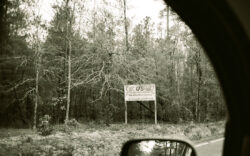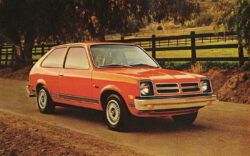
The invitation to my first UGA event read “Casual.”
“Uh oh,” I thought. In my senior year of high school, I had a pretty good idea what spring casual meant at the University of Georgia—Bermuda shorts, button-down madras or polo shirts, loafers or deck shoes, etc., and I knew I didn’t have any of those and wasn’t likely to acquire them before the date of the party. I had school clothes, which I knew wouldn’t do in Athens, and I had dress-up clothes. So, pretending I had missed the casual directive, I put on my navy blue suit and white shirt with a tie and dress shoes and headed off to the party. My hosts met me in the parking lot with much exclaiming of “Gee, we’re sorry you didn’t get the message about what to wear, but no problem, just take off that coat and tie and come on in.”
They apologized to everybody for not properly informing me, and in white shirt and dress trousers I got through the evening and impressed everybody with my personality if not with my pants.
I think casual clothes are a fairly recent phenomenon. If you look at old pictures of the building of the railroads or the subways or watch a Ken Burns documentary, you’ll notice that the workmen are attired in suits and white shirts (no tie), just like I was, at the party. You can assume that they’re old suits and shirts, but they don’t have on what we would call work clothes, leading one to assume that at the time work clothes were just your old dress-up clothes, that all men could buy was suits (when did overalls come in?) and women could only buy or make those voluminous floor-length dresses they’re wearing in the same documentaries.
Now it’s all reversed. Casual clothes are about all we have, except for that suit we (men and women) keep in the closet for the job interview or maybe the funeral (though lots of guys come to funerals—and their own weddings—in just shirts these days).
When I did get to college, I was painfully aware that my high school clothes were hopelessly yesterday, and I gradually tried to replace them with cool stuff. I couldn’t afford the makeover that happened to a lot of the guys (and, I assume, the girls). Typically, for those with the means, their new fraternity brothers would whisk them downtown to John Q. West (now George Dean’s), Gunn’s (“You can tell a Gunn’s man at a glance.”) or Dick Ferguson’s (still here, at Beechwood), where they would be transformed from their Jenkins County farm (successful) boy persona to UGA frat boy who fit in and was cooly indistinguishable from any other UGA frat boy, which was the whole point.
The ideal at that time was called “Ivy League,” which meant button-down shirts, chinos with the little buckles in the back (word) and Bass-Weejun penny loafers—no other brand would do. (My feet were such that I couldn’t keep loafers from slipping.) Oddly enough, I went off North to a national church conference along about that time and encountered the coolest Ivy League, Yale divinity student, and he was wearing (gasp!) faded jeans and tennis shoes. I had seen the future, as far as the University of Georgia was concerned, but it took a while to arrive. When it did, it bankrupted a guy who later became a good friend of mine. He had parlayed his inheritance of a family dry cleaning business into a virtual monopoly here in Athens, just in time for the switch from Gunn’s men to t-shirts and jeans.
So now the well dressed student is wearing athletic shorts and a tank top or khaki shorts and white t-shirts with flip-flops, athletic cap optional, depending on fraternity, and why should we smirk? We all conform to some dress code, whoever dictates it. If the economy and those who control it continue to turn us back to the 19th Century, we may all be going to work at our service jobs in our worn out suits, saving our athletic shorts for the next job interview.
Like what you just read? Support Flagpole by making a donation today. Every dollar you give helps fund our ongoing mission to provide Athens with quality, independent journalism.










